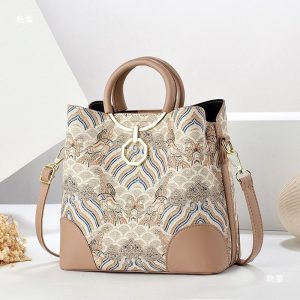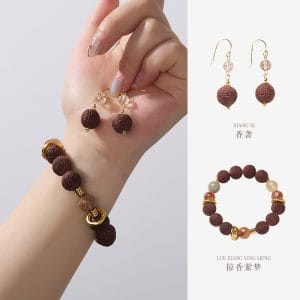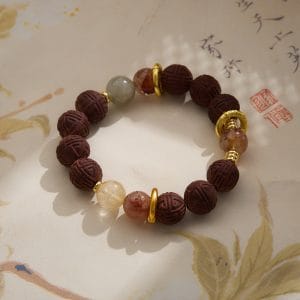Background
For centuries, the Chinese silk scarf has epitomized elegance, artistry, and cultural heritage, weaving together threads of history, craftsmanship, and modern fashion. These delicate accessories are far more than mere adornments; they are tangible pieces of China’s rich tapestry, telling stories of ancient trade routes, imperial luxury, and artistic evolution. From the misty hills of sericulture farms to the bustling ateliers of contemporary designers, each scarf carries with it a legacy of meticulous skill and profound symbolism, making it a cherished item across the globe.
Why It Matters
The origins of silk production in China date back over 5,000 years, with legends attributing its discovery to the Empress Leizu. Silk quickly became a symbol of status and wealth, reserved initially for royalty and the elite. The intricate process of sericulture—raising silkworms, harvesting their cocoons, and spinning the fine threads—was a closely guarded secret for millennia, giving China a monopoly on this luxurious fabric. Scarves, as we know them today, evolved from earlier silk garments and accessories, becoming popular during the Tang and Song dynasties as items of both practicality and beauty, often adorned with motifs inspired by nature, mythology, and philosophy.
Creating a traditional Chinese silk scarf is an art form that demands patience and precision. It begins with the careful rearing of Bombyx mori silkworms, which feed exclusively on mulberry leaves. Each cocoon yields a single continuous thread that can be up to 900 meters long. These threads are then dyed using natural pigments derived from plants, minerals, and even insects, producing a vibrant palette that has been refined over centuries. Weaving techniques such as jacquard or hand-embroidery add texture and depth, with patterns often conveying blessings, prosperity, or cultural narratives, making every scarf a unique masterpiece.
According to a recent study published in the Journal of Textile History and Culture (2023), consumers increasingly value authenticity and sustainability in luxury goods, with Chinese silk scarves seeing a 15% rise in demand among eco-conscious buyers in the past five years. The research highlights that artisanal methods, such as those used in Sichuan and Jiangsu provinces, not only preserve cultural heritage but also appeal to modern shoppers seeking ethically produced items with a story. This trend underscores a growing appreciation for handmade craftsmanship in a mass-produced world.
Symbolism is deeply embedded in the designs of Chinese silk scarves. Common motifs include dragons, representing power and good fortune; peonies, symbolizing wealth and honor; and cranes, denoting longevity and peace. These elements are not arbitrary; they reflect Confucian, Taoist, and Buddhist influences, weaving spiritual and philosophical meanings into wearable art. For many, wearing such a scarf is akin to carrying a piece of cultural wisdom, a connection to ancient values that resonate even in contemporary settings.
In modern fashion, Chinese silk scarves have transcended their traditional roles, embraced by designers and style icons worldwide for their versatility and timeless appeal. They can be draped, tied, or worn as statement pieces, blending seamlessly with both casual and formal attire. High-end brands often collaborate with Chinese artisans to incorporate classic techniques into new collections, ensuring that this heritage craft continues to evolve while staying rooted in its origins. This fusion of old and new keeps the scarf relevant and beloved across generations.
Beyond aesthetics, the Chinese silk scarf industry plays a significant role in supporting rural economies and preserving intangible cultural heritage. Many workshops are family-owned, passing down skills through generations, and initiatives by organizations like UNESCO help safeguard these traditions. For collectors and wearers alike, owning a genuine Chinese silk scarf is not just a fashion choice but an investment in culture, sustainability, and art—a small yet profound way to keep history alive and thriving in everyday life.
You May Also Like
The Palace Museum Paper-Cut Light Art Fridge Magnets: Chinese Cultural Style Creative Gift Series
Price range: $27.00 through $36.00 Select options This product has multiple variants. The options may be chosen on the product pageGuangxi Zhuang Brocade Handmade Tote – Ethnic Boho Large-Capacity Shoulder Bag
Original price was: $172.00.$150.00Current price is: $150.00. Add to cartAncient Craft Herbal Scented Bead Bracelet with Gold Rutile Quartz, Paired with Sterling Silver (925) Hook Earrings
Original price was: $322.00.$198.00Current price is: $198.00. Add to cartHandwoven Zhuang Brocade Tote Bag – Large-Capacity Boho Shoulder Bag
Original price was: $178.00.$154.00Current price is: $154.00. Add to cart








